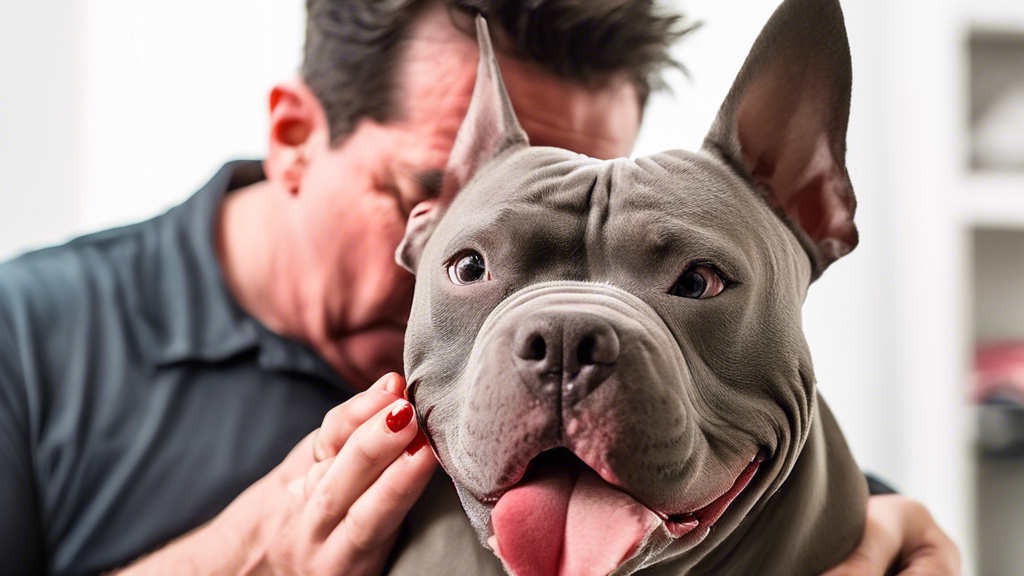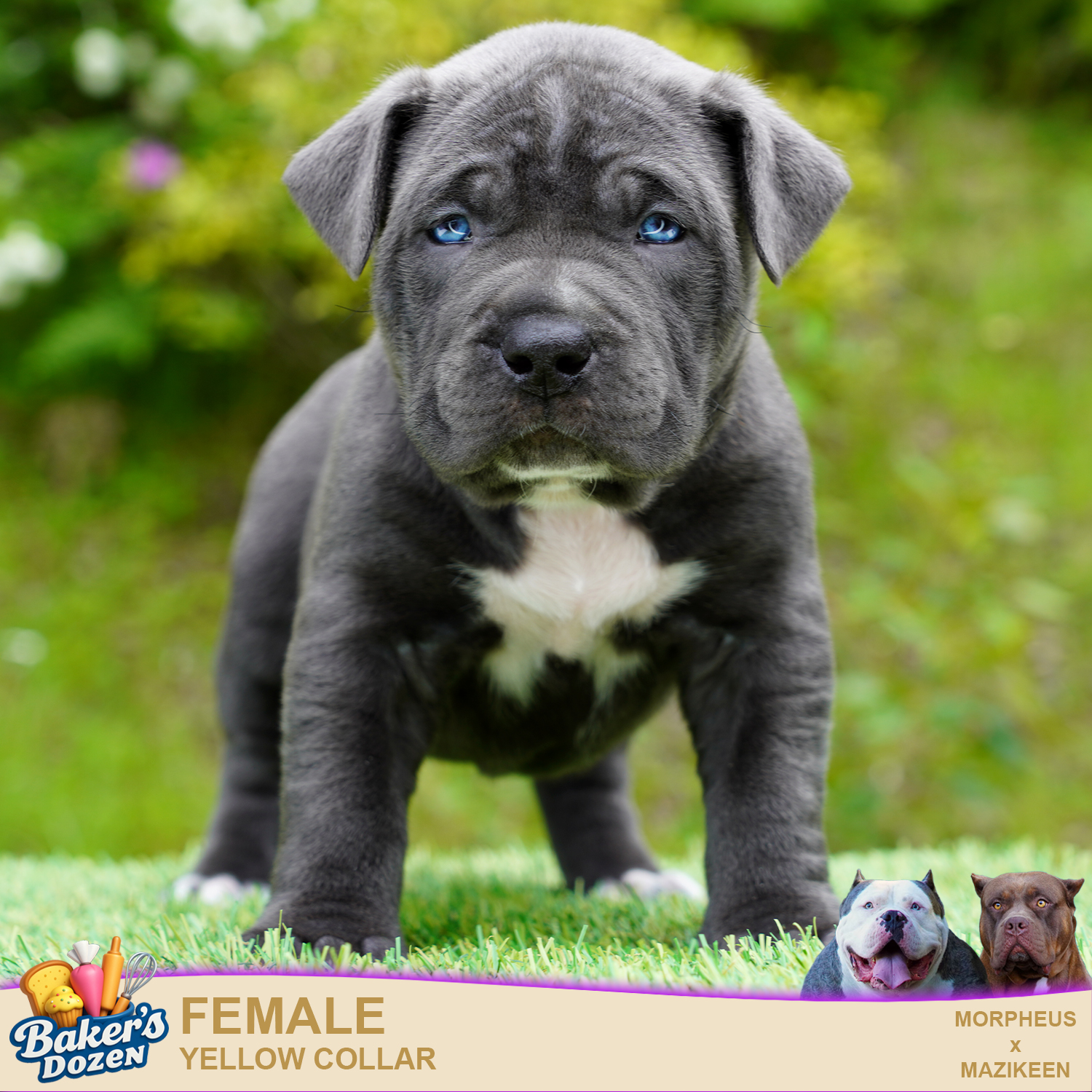**Understanding American Bully Allergies: Symptoms and Solutions**
American Bullies, known for their muscular build and affectionate nature, are prone to allergies, affecting their skin, digestion, respiratory system, and eyes. Allergens, such as food ingredients, environmental triggers, and parasites, can trigger an allergic response causing discomfort and health issues for your beloved pet.
This comprehensive article will delve into the common symptoms of American Bully allergies, including skin irritation, digestive upset, respiratory problems, and eye irritation. We will also explore effective solutions to manage these allergies, emphasizing the importance of allergen avoidance, using hypoallergenic products, regular bathing and grooming, providing a balanced diet, and considering allergy shots or immunotherapy.
By understanding the symptoms and implementing the recommended solutions, pet owners can effectively alleviate allergy-related discomfort and enhance the well-being of their American Bullies.
## Symptoms of American Bully Allergies
American Bullies, like all breeds, can suffer from allergies, which can cause a range of uncomfortable and even distressing symptoms. Recognizing these symptoms is crucial for providing relief and ensuring the overall well-being of your furry companion.
### Skin Irritation, Itching, and Redness
One of the most common allergy symptoms in American Bullies is skin irritation. This can manifest as intense itching, redness, and inflammation, often resulting in constant scratching and licking. The affected areas may appear raised, bumpy, and even infected.
### Digestive Upset
Digestive issues are another hallmark of allergies in American Bullies. Vomiting and diarrhea are common symptoms, often triggered by the ingestion of allergens. Loss of appetite, gas, and abdominal discomfort may also occur.
### Respiratory Issues
Allergies can also affect the respiratory system of American Bullies. Sneezing, coughing, and wheezing are all potential signs of an allergic reaction. Difficulty breathing, nasal congestion, and excessive mucus production may also be experienced.
### Eye Irritation and Discharge
Eye irritation is another common symptom of allergies in American Bullies. The eyes may appear red, watery, or swollen, with increased discharge or tearing. Squinting, pawing at the eyes, and light sensitivity are also possible indicators of an allergic reaction.
The #1 Free Source for Pitbull & Bully Pedigrees!

Solutions for American Bully Allergies
Once you have identified the allergens triggering your American Bully’s allergies, the next step is to implement solutions to alleviate their discomfort and improve their quality of life.
Identify and Avoid Allergens
The most effective way to manage allergies is to identify and avoid the allergens causing the reactions. Common allergens for American Bullies include:
- Pollen (grass, trees, weeds)
- Dust mites
- Mold
- Flea saliva
- Certain foods (e.g., beef, dairy, wheat)
Monitor your dog’s environment and activities to determine potential triggers. Keep them away from areas with high pollen counts, use air purifiers to reduce dust mites, and regularly clean their bedding and toys to minimize mold exposure.
Use Hypoallergenic Products
Using hypoallergenic products can help reduce exposure to allergens in your dog’s environment. Look for:
- Shampoo and conditioner: Choose products specifically labeled as hypoallergenic or for sensitive skin.
- Bedding and blankets: Opt for materials like cotton, bamboo, or fleece, which are less likely to trap allergens.
- Toys and accessories: Select toys made from non-porous materials like rubber or plastic that can be easily cleaned.
Bathe and Groom Regularly
Regular bathing and grooming can help remove allergens from your dog’s skin and coat. Use lukewarm water and a gentle hypoallergenic shampoo specifically formulated for dogs.
Brush your dog’s coat daily to remove loose hair, dander, and other allergens. Trimming their nails can also help prevent them from scratching and irritating their skin if they are allergic to something in their environment.
Provide a Healthy Diet
A healthy diet is essential for overall well-being and can also help manage allergies. Feed your American Bully a high-quality, species-appropriate diet that is free from common allergens like wheat, corn, and soy.
If your dog has food allergies, consult with your veterinarian about a hypoallergenic diet that excludes specific ingredients that may be triggering their reactions.
Consider Allergy Shots or Immunotherapy
In severe cases where avoidance and other solutions are not effective, allergy shots or immunotherapy may be considered. These treatments involve gradually exposing your dog to controlled amounts of the allergen to help their immune system build tolerance over time.
Allergy shots are typically given once or twice a week, and the dosage is gradually increased. Immunotherapy can be a long-term commitment, but it can provide significant relief for dogs with severe allergies.
In summary, American Bully allergies can manifest a range of symptoms affecting the skin, digestive system, respiratory tract, and eyes. It is crucial to recognize these symptoms and consult a veterinarian promptly for proper diagnosis.
Effective solutions involve identifying and avoiding allergens, utilizing hypoallergenic products, adhering to regular bathing and grooming routines, and providing a balanced diet. If conventional methods prove insufficient, consider allergy shots or immunotherapy to desensitize the dog to specific allergens.
Owners should be vigilant in managing their American Bully’s allergies to ensure optimal health and well-being. By implementing the solutions outlined above, they can effectively mitigate allergic reactions and enhance the quality of life for their beloved companions.














Leave A Comment